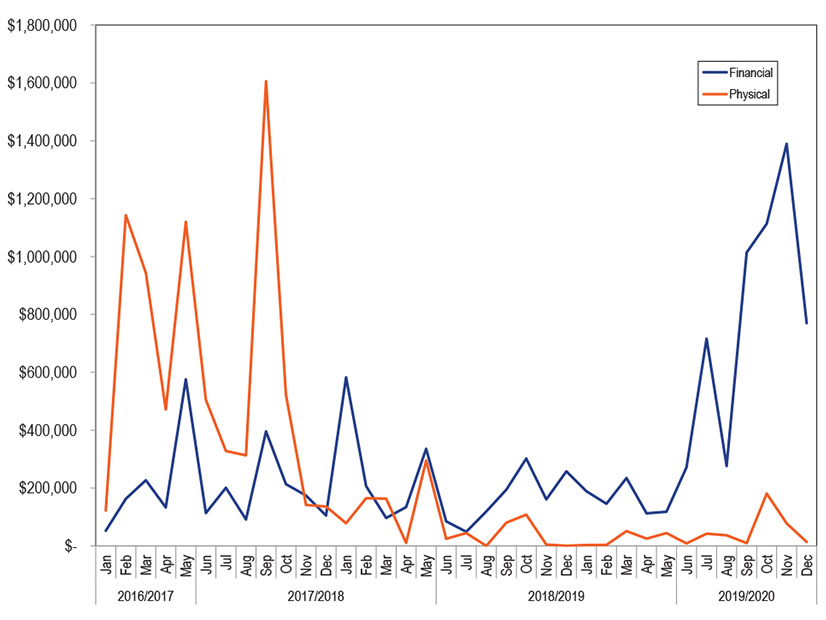FERC on Jan. 31 accepted PJM’s financial transmission rights forfeiture rule replacement without ordering refunds of bills under the previous regime the RTO implemented without commission approval (ER17-1433). The new rule took effect Feb. 1.
The commission in May found that PJM’s previous 1-cent FTR impact test, which determines whether the net flow impacts the absolute value of an FTR by 1 cent or greater, to be unjust and unreasonable. It ordered a replacement that used a different threshold or an alternative approach. (See FERC Rejects PJM FTR Forfeiture Rule.)
PJM in July proposed replacing the 1-cent threshold test with a test that is evaluated at each individual constraint and to post additional day-ahead data to “enable market participants to better estimate whether their transactions may trigger forfeiture.”
FTRs are financial instruments that allow load-serving entities to hedge the risk of transmission congestion costs and permit financial traders to arbitrage day-ahead and real-time congestion. PJM originally implemented the forfeiture rule in 2000 to prevent market participants from using virtual transactions to create congestion that benefits their FTR positions.
Under PJM’s revised rule, the revenues on an individual constraint may be forfeited when:
- the absolute value of the attributable net flow across a day-ahead binding constraint relative to the day-ahead load weighted reference bus between the FTR delivery and receipt buses exceeds 10% of the physical limit of such binding constraint;
- the net flow is in the direction that increases the value of the FTR between the delivery and receipt buses; and
- the net flow results in a higher congestion LMP spread in the day-ahead energy market than in the real-time energy market.
“We find that PJM’s revised FTR forfeiture rule reflects a reasonable balance,” the commission said Jan. 31. “It will sufficiently deter manipulative behavior without significantly burdening legitimate hedging activity.”
“While the revised FTR impact test has, in a sense, replaced a greater than 1-cent threshold with a marginally more restrictive greater-than-zero threshold, we expect that evaluating forfeiture at each individual constraint will substantially reduce the amount of money forfeited because it targets only the constraints at which violations occur,” it said.
No Refunds
FERC first ordered PJM to change how it implemented the forfeiture rule in January 2017. The RTO responded with two compliance filings and began billing forfeitures based on the new approach in September 2017, even though the commission had not approved the filings.
In its order rejecting the filings last year, FERC said PJM must include information to help the commission to determine whether it should issue refunds and surcharges.
PJM requested that FERC decline to order retroactive refunds, saying it was “not presently capable of providing details regarding the specific parties who would receive refunds or be charged surcharges.” The RTO said that “absent considerable software development and testing work that would take months to complete,” it was unable to identify market participants that would have violated the pre-2017 rule and the extent of resulting charges or credits from an update.
The commission found that PJM had demonstrated that it does not the capability to calculate refunds, and therefore they were “not appropriate.”
“In order to attempt to resettle nearly 4.5 years’ worth of FTR forfeitures, PJM would need to resurrect the old code, significantly rewrite this software to account for structural database changes resulting from subsequent market design modifications and then conduct testing work that would take months to complete,” FERC said. “These efforts would come at considerable expense, which would presumably be passed on to transmission ratepayers.”
While he concurred with the results of the order FERC Commissioner James Danly admonished PJM for implementing the rule before it was approved by the commission.
“I also must regretfully agree with the decision not to order refunds because it appears impossible to put this genie back into its bottle,” Danly said. “PJM shoulders the blame for this mess for implementing a compliance rate that had not yet been approved.”



